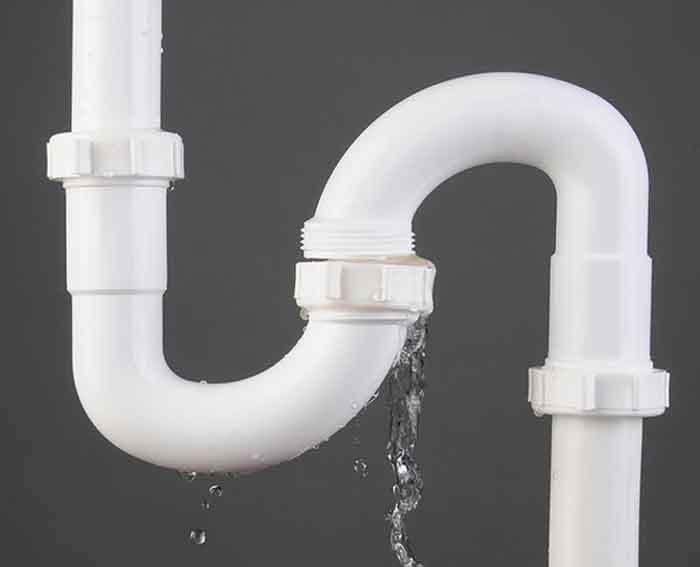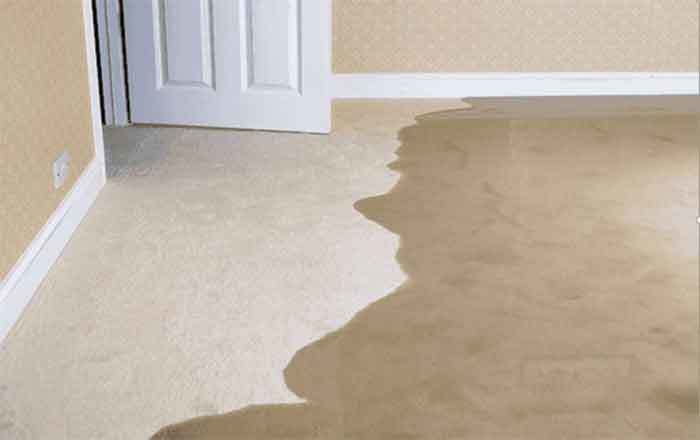Disclaimer: This post may contain affiliate links, meaning we get a small commission if you make a purchase through our links, at no cost to you. For more information, please visit our Disclaimer Page.
If you are having problems in your household with low water pressure, sudden damp spots on your floor and carpet, and a higher water bill than usual then it’s possible that you are having problems with a slab leak.
A slab leak problem is often more common in places with frequent earthquakes. But, this doesn’t mean that they can’t occur elsewhere since a huge number of homes are built on a slab of concrete.
Slab leaks usually affect hot or cold water lines and can appear on any drain line from any home device that uses water.
It is crucial to be informed on slab leaks in case you ever find yourself in a situation dealing with one. We will try to give you some basic information and advice on what to do when dealing with this problem.

What Are Slab Leaks Exactly?
A slab leak is a break in a pipe that runs directly beneath the concrete foundation of your home. If that pipe breaks, water leaks into the ground and your home’s foundation. Slab leaks don’t only occur in water lines, but in sewer lines as well.
A large number of modern homes have concrete slab foundations in which a layer of concrete is poured onto a soil or gravel surface. Afterward, the house is built on this slab. If the slab is damaged in any way the structural integrity of the entire house is at risk.
Although your first impression may be that these leaks are insignificant, don’t let it fool you. Slab leaks can cause a variety of different problems for your household, and it can lead to significant damage and some very costly repairs.
If unattended, slab leaks can drench the soil underneath the house, making the floors uneven and slowly sinking the building into the ground.

What Causes Slab Leaks and How to Detect Them?
Since early detection is of utmost importance with slab leaks, we will present to you some of the earliest symptoms that may hint that you are having this problem, as well as what causes them.
Here is a list of the most common possible causes for a slab leak:
Corrosion
Underground pipes are in direct contact with the soil and the metals it contains. This might lead to galvanic corrosion caused by contact between two different metals.
This kind of corrosion can be very problematic since it can eat a hole in your pipes and cause a leak.
Improper Construction
This is probably the most common reason slab leaks occur, and it has to with poor-quality pipes that are improperly installed.
If the pipes were bent or dented in any way during the installation, the affected areas could cause the pipes to leak perhaps even burst due to the abrasive properties of water flowing by.
Some pipes, such as copper pipes, are at a much higher risk of suffering from corrosion. The reason behind this is that they are naturally softer and more vulnerable to the elements.
In some cases, it is possible that a repair just won’t be enough, you will need to buy new pipes. This is most common for older homes.

Abrasion
When water flows through the pipes it causes them to vibrate.
If the pipe happens to be next to a hard surface such as concrete, another pipe, or perhaps gravel, then the metal wears away at the point where it rubs against that hard surface. This eventually leads to a forming of a hole and then the pipe starts leaking.
Excess and Outside Pressures
Since underground pipes are often placed under very heavy pressure, it could eventually cause them to crack.
This is most common in places with clay soils that expand when they are wet and shrink when dry, which causes the ground to shift and put enormous pressure on the slab and pipes.
This can also be caused by an earthquake, an underground stream or soil erosion. When slab leaks are caused by this type of pressure the consequences could be damaging.
Poor Water Quality
Not only should you keep an eye on your water pressure, but you should also examine your water’s pH level.
There are two types of water. The first one is called “Hard water”, and it is extremely acidic. The other type is “Soft water”, and this one is extremely alkaline.
It’s important to know that both of these types can cause pipe corrosion. Acidic water can be easily spotted, some signs are blue and green stains in your shower, bathtub or sink in addition to a chlorine-like smell.
If you leave your water unchecked it could cause irreversible water damage. The normal pH of water is anywhere between 6.5 and 8.5.
Early Slab Leak symptoms you shouldn’t ignore
The symptoms of a slab leak aren’t always that obvious and can often be mistaken for some other plumbing issues. Since slab leaks can cause a lot of damage in a short time period, it’s important that you investigate as soon as you start noticing some of these symptoms.

These are some of the most common symptoms detected when there is a slab leak, but it doesn’t mean they are the only ones. Here is a list of some other symptoms that you may notice instead:
- A moving water meter dial when pipes aren’t in use.
- Unusually low water pressure.
- Soggy spots near the home’s foundation.
- A buckling foundation.
Even if you do notice some of these signs, it doesn’t automatically mean that you are facing a slab leak problem, but it is for the best that you call a professional to examine your household.
It’s definitely not a problem that you should postpone dealing with since it can cause serious damage if untreated.
Slab Leak Repair: What Can You Do?
There are three basic methods that are most often used in dealing with slab leaks:
- Repairing the damaged section – If the pipe is in overall good condition, and the leak is minor, then this is probably the most practical option as the leaking section of the pipe can easily be replaced.
- Rerouting the pipe – If the leaking pipe is not in a good condition and it’s old, then repairing the leak in only one spot could potentially cause it to appear elsewhere on the pipe. In this case, the best option is to shut off the pipe at the closest manifold and re-route it.
- Re-piping the house – This is the solution in older houses where the whole plumbing system is crumbling. Re-piping the house will free you from worrying about future leaks and the damage and stress they bring.
Conclusion: On Slab Leaks
Although you might feel tempted to try and fix slab leaks by yourself to save some money, we strongly advise that you call a professional for help as soon as possible, so they could locate the leak and provide you with the best solution.
Whether it needs a simple fix or a complicated one, an expert will surely remedy the problem. We hope this article gave you some help in understanding what slab leaks are and how to notice them.
